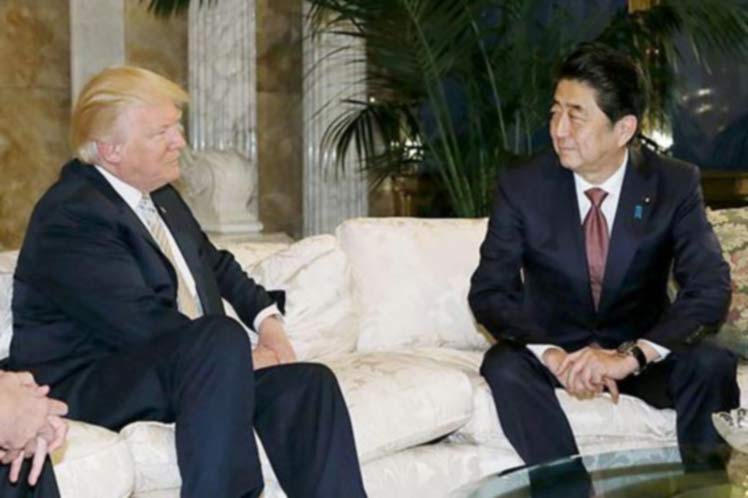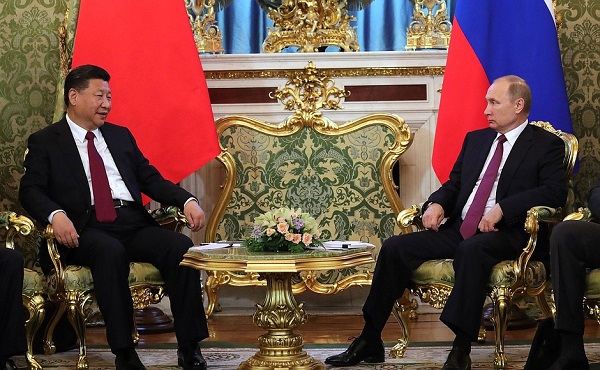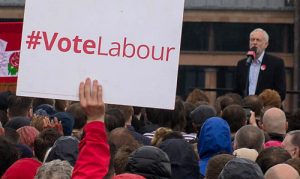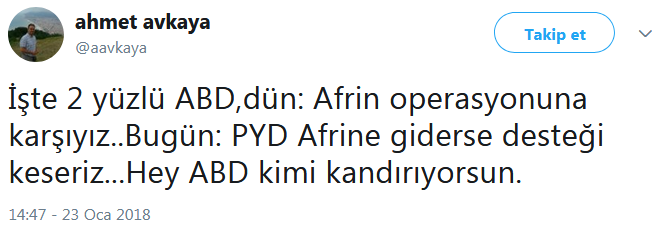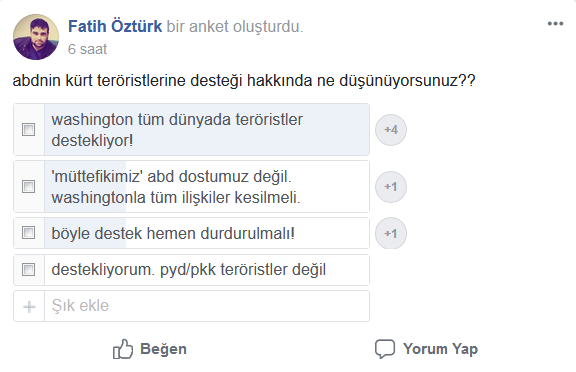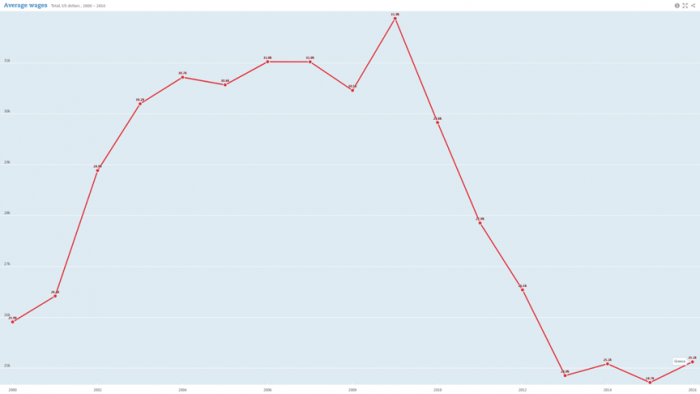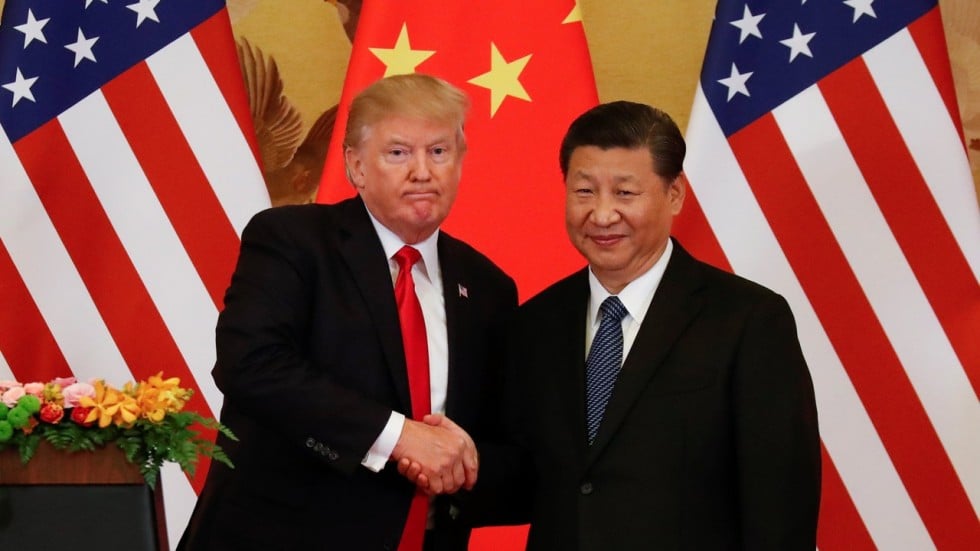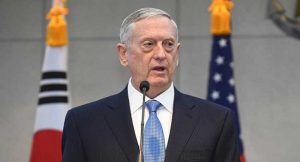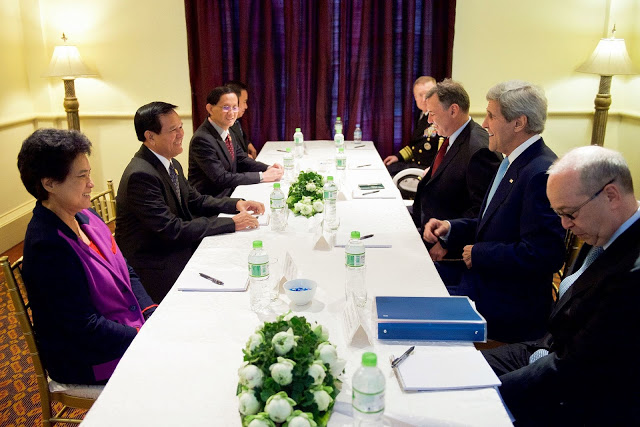Em 11 de setembro de 2012, aniversário de 11 anos dos ataques de 2001 dentro dos Estados Unidos, Donald Trump tuitou:
“84% das tropas dos EUA feridas & 70% dos nossos valentes homens & mulheres mortos no Afeganistão, têm ocorrido com Obama. Hora de sair de lá”.
Assim que chegou a Casa Branca, tanto o discurso quanto a prática mudaram completamente já fazendo o magnata nova-iorquino, proporcionalmente, o maior lançador de bombas e assassino de inocentes no Afeganistão.
“Qualquer um que se sente na Casa Branca, continuará servindo ao um por cento e espalhará guerras por todo o mundo para manter a hegemonia dos Estados Unidos. Muitas corporações, fabricantes de armas e empregadores de mercenários beneficiam-se com a própria guerra, ou das enormes oportunidades de reconstrução da destruição criadas pela guerra”, diz após 16 anos de ocupação norte-americana ao Afeganistão a ativista local que se identifica apenas como Friba, líder e porta-voz da Associação das Mulheres Revolucionárias do Afeganistão (RAWA, na sigla em inglês), cujas mulheres-membros atuam, todas, no anonimato em território afegão.
Em palestra na Rússia em agosto de 2016, em plena campanha presidencial de Donald Trump, o general Michael Flynn afirmou, jogando ainda mais gasolina sobre o fogo da “Guerra ao Terror”:
“Estamos enfrentando outro ‘ismo’; como enfrentamos o nazismo, o fascismo, o imperialismo e o comunismo. E o Islamismo, câncer terrível no corpo de 1,7 bilhão de pessoas neste Planeta, deve ser extirpado”.
Assim que o magnata nova-iorquino assumiu a Presidência da melhor democracia que o dinheiro pode comprar, em 20 de janeiro de 2017 exatamente Flynn foi apontado conselheiro de Segurança Nacional por Trump.
O Bilionário Negócio das Megamortes Sistemáticas
Trump tem dado ímpar contribuição ao acirramento do ódio religioso contra islamitas e árabes em geral, especialmente através da proibição da entrada de cidadãos de diversos países de maioria muçulmana, além do drástico aumento dos bombardeios sobre o território afegão.
Enquanto questionava, em campanha presidencial de 2016 por que os Estados Unidos ainda guerreavam no Afeganistão, até outubro de 2017 o regime de Trump despejou nada menos que 3.554 bombas no país sul-asiático. Em 2016 haviam sido 1.337, e 947 em 2015. Em setembro do ano passado, o mandatário estadunidense enviou mais três mil tropas ao Afeganistão.
Ao mesmo tempo, o Taliban espalha-se ainda mais pelo país – em fevereiro de 2017 ocupava 11% doterritório afegão, e 13% em agosto, o que significa acréscimo de 700 mil vivendo sob o regime terrorista –, o Estados Islamita recém-surgido revigora-se, e o número de civis mortos – inclusive pelos bombardeios estadunidenses – aumenta. Tudo isso servindo como justificativa para maior militarização por parte dos Estados Unidos, apoiados na distorção midiática sobre a Guerra do Afeganistão.
Sobre isso, a ativista afegã garante:
“O aumento do número de tropas dos Estados Unidos não torna o país seguro, nem derrota as criações dos Estados Unidos, o Taliban e o Estado Islamita, pelo contrário, funciona como mostra do poder norte-americano aos rivais Rússia, China e Irã”.
Relatório da Unama (Missão de Assistência das Nações Unidas no Afeganistão, na sigla em inglês) publicado em julho do ano passado afirmou que em seis meses, o regime de Trump já havia assassinado civis no Afeganistão a um nível superior em 67% comparado ao mesmo período do ano anterior.
Os lucros apenas com a invasão ao Afeganistão, mais longa guerra da história dos Estados Unidos, confirmam a relação entre as afirmações de Friba, as de Flynn e os criminosos ditos e feitos de Trump: em agosto de 2017 Neta Crawford, co-diretora de Cost of Wars Project da Brown University, estimou que o total gasto com as guerras no Iraque, Afeganistão e Paquistão desde 2001, está próximo dos cinco trilhões de dólares – apenas no Afeganistão, o regime de Washington já “investiu” cerca de 2 trilhões de dólares.
O gráfico abaixo apresenta os gastos militares anuais dos Estados Unidos no Afeganistão, de 2001 a 2017:
‘Nova’ Estratégia para o Afeganistão: Brincando de Tom & Jerry
Em 21 de agosto, o magnata nova-iorquino apresentou o que qualificou de Nova Estratégia para o Afeganistão, que implica ocupação por tempo indefinido até que o país asiático encontre-se totalmente seguro, e um acréscimo – por enquanto – de mais de 10 mil militares norte-americanos em solo afegão.
Eis a milenar tática dos poderes opressores: criar problemas para vender solução no que o povo afegão tem sido uma das maiores vítimas do mundo, senão a maior, desde que as Torres Gêmeas ruíram em 11 de setembro de 2001.
Por outro lado, já não se recorda mais que o objetivo da invasão norte-americana era capturar Osama bin Laden – quem, além de oficialmente morto, sempre negou ter tido qualquer participação nos maiores atentados terroristas em solo estadunidense de toda a história.
Tampouco as sociedades globais, nem sequer a norte-americana lembra-se do próprio Tuíte de Trump em 11 de setembro de 2012, mencionado no início – devido, especialmente, à torrente de informações e completamente fora de contexto por parte da grande mídia de embaralhamento do entendimento coletivo.
Terroristas ‘Made in West’
Enquanto no Afeganistão, assim como em todos os países onde aplica a “Guerra ao Terror”, os maiores assassinos são as forças estadunidenses, dentro de casa a maior parte dos atos terroristas é, de longe, perpetrada por cidadãos norte-americanos brancos e protestantes. Em penúltimo lugar da lista do FBI, aparecem os islamitas.
“Apesar de todas as diferenças, o objetivo dos Estados Unidos e do Irã no Afeganistão coincidem em uma questão: na promoção da ideologia fundamentalista, e na continuação do apoio aos fundamentalistas mais reacionários, mentalidade retrógrada e criminosos”, denuncia Friba ao apresentar um cenário bastante familiar aos latino-americanos, especialmente quando o assunto é guerra suja de Tio Sam que inclui a formação de fantoches entre as elites locais, projetados como celebridades e até intelectuais pela grande mídia subserviente aos ditames de Washington.
“Enquanto os Estados Unidos mataram centenas de afegãos revolucionários e libertários através de seus fundamentalistas nos anos de 1980 e 90, Washington usa tais táticas para evitar a ascensão de personagens nacionalistas, libertários e independentes além de forças que resistiriam à ocupação e opressão”.
Imperialismo Cultural: Capitalismo Seduzindo Almas Afegãs
Sobre a “compra” da alma de jovens afegãos abordada nesta entrevista, Friba havia comentado o seguinte de modo particular, em outubro de 2017, em resposta às observações deste comunicador de que, no Brasil e na América Latina em geral, há evidências de financiamento de Washington a jovens lacaios que inclui dóceis recepções das embaixadas estadunidenses, em seus respectivos países:
“Temos muita experiência com este tipo de ‘gentileza’ e encontros da Embaixada dos Estados Unidos com afegãos. O imperialismo dos Estados Unidos não se solidariza com a juventude, com mulheres e com crianças, nem com as suas próprias.“Os Estados Unidos nunca atuam em um país visando sua melhoria, mas por seus próprios interesses e objetivos. Enquanto os latino-americanos têm sido, há muito tempo, vítimas das mudanças de regime por parte de Washington, o Afeganistão tem experimentado a ocupação”.
Nesta entrevista, Friba aprofunda-se na questão e, entre outros programas de “ajuda” estadunidense em solo afegão, fala de deste: o Leadership Program International Visitor (Programa de Liderança do Visitante Internacional), “que reverbera os métodos de treinamento da CIA”.
Cursos de líderes realizados em território estadunidense, sonho de consumo de parte da juventude latino-americana, especialmente religiosa (cuja estrutura é bem menos transparente que a da própria política além, é claro e nem poderia ser diferente dentro disso, ferrenha defensora do sistema vigente em nome de Deus), também são bastante comuns na formação de indivíduos que acabam glorificando raivosamente os “iguais” (entenda quem quiser) no lado de cá do planeta, vale destacar.
Lá tal qual cá, atuam inclusive em universidades e ONGs de fachada a fim de impor no imaginário coletivo que a ocupação norte-americana é natural e necessária, neutralizando com isso o engajamento da sociedade por um país livre e soberano.
O sistema de ensino afegão, observa Friba, está moldado pelo poder imperialista para inculcar os jovens “a aceitar a ocupação como natural e necessária a fim de salvar nosso país, e em um sentido mais amplo evitar falar em política”: alguém no Brasil já ouviu o difundido lema que diz que política não se discute? Pois é.
E segue Friba no mesmo sentido: “Evitar falar contra o governo e, especialmente, discutir temas progressistas”: é também por terras tupiniquins que, de maneira inédita a nível global, tenta-se enfiar goela abaixo da sociedade uma tal de Escola sem Partido, que proíbe o professor de apresentar matérias de maneira crítica para além do livro didático, estabelecendo debates e até mesmo expondo suas próprias ideias.
Isso tudo além de meios de comunicação autoproclamados “livres” que, de acordo com Friba, “trabalham ativamente no controle da opinião pública, em favor da colonização dos Estados Unidos”.
Neste último caso, a mesma USAID (famosa mundialmente por se tratar de ONG de fachada da CIA) que passou a atuar no sistema de ensino brasileiro logo após o golpe militar de 1964 – e formou as milhões e milhões de figuras tupiniquins dos perfeitos idiotas que tão bem quanto desgraçadamente conhecemos –, é a maior doadora financeira da grande mídia afegã.
Em contraposição a isso tudo, todos os anos, entre 6 e 8 de outubro, centenas de cidadãos progressistas como as mulheres da RAWA, saem às ruas de Cabul para protestar contra a invasão norte-americana em 7 de outubro de 2001 que apenas acirrou a violência, e multiplicou a produção de ópio de cuja planta se produz a heroína, cujo contrabando é traçado pela CIA.
Uma minoria local que tem estado na linha de frente contra quatro fortes inimigos locais: os senhores da guerra, os talibãs, as forças de ocupação dos EUA/OTAN, e o Estado Islamita recém-surgido.
E contra um falido sistema capitalista que não está tirando o país sul-asiático da miséria nem da extrema violência, o que o capitalismo é incapaz de fazer. Pelo contrário: está afundando ainda mais o Afeganistão no lamaçal e na vergonha mundial, utilizando-se de todos os recursos para executar exatamente aquilo que garante sua sobrevivência mundo afora: comprar consciências, calar vozes mais covardes e propagandear um universo que não existe sequer nas imaginações mais ingênuas.
Narcotráfico Afegão Traçado pela CIA
Gráfico das Nações Unidas mostra o meteórico crescimento da produção de ópio no Afeganistão após a invasão dos Estados Unidos, batendo recordes ano a ano atingindo a cifra de 224 mil hectares em 2016.
Às vésperas de tal invasão, essa produção havia sido praticamente erradicada, encontrando-se na faixa das 8 mil hectares de ópio produzido em 2001, para logo no ano seguinte saltar para 74 mil. “A produção de droga e do narcotráfico constituem-se a base da nossa economia, com milhões de viciados como seu sinistro resultado”, lamenta Friba.
Diante de tais números (nada divulgados pela grande mídia de manipulação das massas), vale ressaltar que a sociedade estadunidense é a maior consumidora de drogas do mundo.
Pois o narcotráfico é tão comprovado quanto antigo financiamento aos empreendimentos imperialistas por todo o mundo – Irã-Contras foi um dos escândalos mais emblemáticos neste sentido, envolvendo diretamente Ronald Reagan e a própria CIA.
O Que a Grande Mídia Não Quer Ver
Tudo isso comenta na conversa a seguir a porta-voz das revolucionárias afegãs, como sempre de maneira muito aberta, contundente e precisa em cima de fatos, e dados estatísticos envolvendo a criminosa “Guerra ao Terror”.
Irmã siamesa da “Guerra às Drogas”, trata-se de empreendimento imperialista essencial no projeto de dominação global dos Estados Unidos sob precário verniz maniqueísta planejado, muito antes de 11 de setembro de 2001, para ser uma batalha sem fim atrás dos interesses econômicos e geoestratégicos do Império moribundo, o mais terrorista da história da humanidade que forma parceria de relativo sucesso com a grande mídia de imbecilização em massa e, de acordo com Friba, com os piores criminosos afegãos e regionais que, blindados por Washington, gozam do poder local e aterrorizam livremente a sociedade. *
Edu Montesanti: Fale do protesto do último dia 6 de outubro, em Cabul.
RAWA: O protesto de 6 de outubro foi organizado Partido Solidariedade Afeganistão [SPA, na sigla em inglês], contra o 16º aniversário da invasão dos Estados Unidos ao Afeganistão. O SPA é um partido nacionalista e progressista que defende a independência, a liberdade, a democracia, o secularismo e a igualdade. Este protesto é realizado todos os anos, em outubro.
Os manifestantes exigiram o fim da ocupação e da intervenção dos Estados Unidos e seus aliados no Afeganistão, além de outros poderes regionais. Eles levaram cartazes expondo os terríveis crimes dos Estados Unidos no Afeganistão, e exigiram o fim da ocupação através de lemas como “Não à ocupação!”, “Não às bases militares dos EUA/OTAN no Afeganistão!”, ‘Com EUA/OTAN, paz e prosperidade são apenas miragens!”, entre outros.
O Partido também condenou os fantoches do governo afegão, compostos por criminosos fundamentalistas jihadistas, e o recente acordo de paz formalizado com Gulbuddin Hekmatyar.
O SPA também organiza manifestações em 28 de abril, dia em que os fundamentalistas jihadistas criminosos tomaram o poder em Cabul, em 1992 – os mesmos jihadistas que formam o governo fantoche dos Estados Unidos hoje –, e em solidariedade aos movimentos libertários internacionais, tal como a luta curda.
Edu Montesanti: Particularmente, você tem me falado de muitos jovens afegãos “comprados” pelo regime de Washington. Eu mesmo, como já lhe disse, conheci alguns desses fantoches afegãos que receberam bolsas de estudo nos Estados Unidos e conquistaram espaço na mídia local, de maneira que pude comprovar a fanática agressividade diante de toda e qualquer crítica à ocupação norte-americana ao Afeganistão, claramente decorrente de um profundamente cérebro lavado. Detalhe isto, Friba.
RAWA: Há quarenta anos, os Estados Unidos começaram a trabalhar em seu projeto, investindo na juventude afegã a fim de torna-los seus quadros para os objetivos de longo no Afeganistão.
A CIA educou e treinou seus lacaios, política e militarmente, criando lacaios leais que constituiriam seu futuro governo fantoche após tomarem o pode no Afeganistão, e ajudou a realizar confortavelmente seus objetivos.
Entre seus primeiros recrutados, através de programas como Peace Corp e matrículas na Universidade Americana de Beirute, estavam Zalmai Khalilzad, Hamid Karzai, Ashraf Ghani, Farooq Wardak, Azizullah Ludin, Yousuf Pashtun, e Anwar Ahadi, que lideraram o governo afegão e outras posições-chave do poder desde 2001.
Período de educação norte-americana
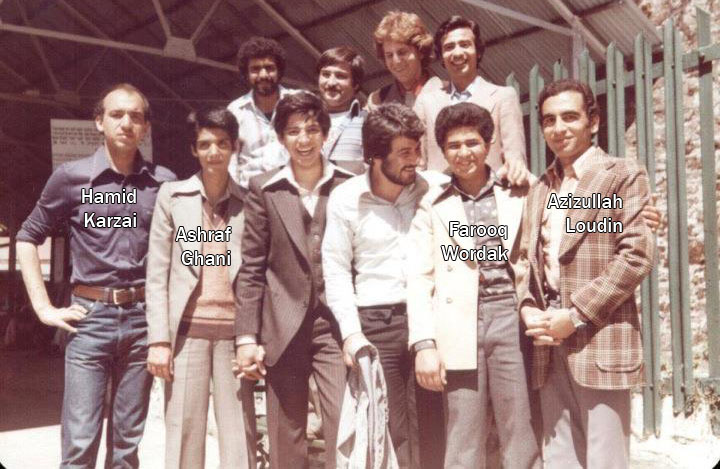
2001 assistiu a uma nova onda de programas que treinaram a juventude para servir à ocupação dos Estados Unidos. Infelizmente, esses agentes educados e treinados pelos Estados Unidos têm crescido no Afeganistão, e continuam aumentando através de programas como Fulbright Program – o Afeganistão é o maior receptor deste programa de bolsas de estudo atualmente –, além de Leadership Program International Visitor, que reverbera os métodos de treinamento da CIA.
Além dos proeminentes títeres mencionados anteriormente, há novos quadros tais como Amrullah Saleh, Hanif Atmar, Nader Naderi, Javed Ludin, Asad Zamir, Wahid Omar, Siddique Siddiqui, Sima Samar, Dadfar Spanta, Saad Mohseni, Javad Tayyab, Azam Dadfar, Daud Muradyan, entre outros.
Após décadas de investimento, hoje os Estados Unidos têm uma quantidade suficiente de burocratas civis para formar várias gerações de traidores fantoches no Afeganistão.
É importante mencionar que décadas depois do colapso do propalado regime comunista de 1978 a 1992, das facções Khalqi e Parchami, muitos agentes afegãos da KGB e diversos outros lacaios juntaram-se aos círculos dos lacaios estadunidenses, isto é, os mercenários fundamentalistas islamitas enquanto eles tomavam o poder após 1992.
Hanif Atmar, um dos mais importantes personagens do atual governo, foi um cruel torturador e assassino de revolucionários e intelectuais durante o período de Khalq e Parcham. Farid Mazdak, Noor ul Haq Oloomi, Mohammad Gulabzoy, Dastgeer Panjsheri, Abdullah Shadan, Shahnawaz Tanai, que era ministro de durante o governo fantoche dos soviéticos mas deu as mãos aos infames senhores da guerra fundamentalistas, Gulbuddin em uma tentativa de golpe, Khalil Zimar, entre outros.
Escritores como Latif Pedram, Rahnaward Zaryab, Partaw Naderi, Wasif Bakhtari, entre outros, também seguiram o mesmo caminho e estão servindo ao governo fantoche dos Estados Unidos atualmente.
O número de ONGs no Afeganistão aumentou dramaticamente após a invasão dos Estados Unidos, outra ferramenta nas mãos de Washington para neutralizar nossa juventude da luta revolucionária contra os invasores estrangeiros, e seus lacaios locais.
Essas ONGs recebem enormes somas em dinheiro da Embaixada dos Estados Unidos e de infames organismos como USAID, também amplamente envolvida em criminosos projetos antipopulares na América Latina desde seu início, e criaram uma nova e falsa classe de jovens que are recebendo grandes somas em dinheiro, em troca de se colocar em prática os objetivos norte-americanos em nosso país.
A difusão desse “imperialismo cultural” tem sido sempre a função das ONGs financiadas pelos Estados Unidos em todo o mundo. A juventude dessas ONGs hoje só vê os interesses dos Estados Unidos no Afeganistão, e fazer propaganda para os Estados Unidos, não em favor de seu povo ou de seu país.
Esses jovens têm sofrido lavagem cerebral através de dinheiro e poder, além de promessas de uma confortável vida fora no exterior, distanciando-os da luta nacionalista e progressista pela independência e liberdade do país.
Grupos fundamentalistas de mentalidade retrógrada, tais como Jamiate Islahe Afghanistan, uma organização Salafi, são igualmente financiadas pelos dólares norte-americanos a fim de difundir a ideologia Ikhwai, e ideias retrógradas entre nossa juventude.
Esses novos recrutas não apenas ocupam posições de alto escalão no Estado, como são também os criadores e doadores da maioria das ONGs e da propalada mídia “livre” do Afeganistão. Esses meios de comunicação trabalham ativamente no controle da opinião pública, em favor da colonização dos Estados Unidos. A USAID é, também neste caso, a maior doadora desses órgãos no Afeganistão.
As Universidades, tanto particulares quanto públicas, também segue a programa de estudos e um método de ensino pró-imperialismo e pró-Estados Unidos, particularmente pró-ocupação estadunidense.
Os jovens são ensinados a aceitar a ocupação como natural e necessária a fim de salvar nosso país, e em um sentido mais amplo evitar de se falar em política, contra o governo e, especialmente, evitar discutir temas progressistas e revolucionários.
Quando o atual presidente, Ashraf Ghani, foi nomeado reitor da Universidade de Cabul em 2005, garantiu que nenhuma discussão nem atividades políticas fossem realizadas no campus.
Todos esses esforços ajudaram a evitar a emergência de uma força ativa anti-ocupação por parte da juventude.
O Irã tem tido grande sucesso no Afeganistão no sentido de espalhar influência cultural e política no Afeganistão também, talvez ainda mais que os próprios Estados Unidos.
Nas últimas três décadas, o regime teocrático iraniano investiu e atuou com seus agentes traidores afegãos, tanto militares quanto intelectuais, além de ter criado e financiado partidos e organizações islamitas fundamentalistas de sua própria espécie no Afeganistão, como o Partido Wahdate Islami, Ittelaf Milli, e Harkate Sheikh Mohseni.
Hoje, além de colaborar com o criminoso Taliban e comprar pessoas do governo – o ex-presidente Karzai admitiu que seu gabinete recebeu malas de dinheiro do Irã -, Teerã possui uns tantos propalados “intelectuais” à sua disposição, os quais são porta-vozes do regime fascista iraniano e atuam ativamente nos canais de TV e jornais financiados pelos iranianos a fim de espalhar o vírus iraniano Vilayat-e Faqih em nosso país, e educar e treinar a juventude com o mesmo propósito. Entre eles estão Kazim Kazimi, Husseini Mazari, Rizwani Bamyani, Noor Rahman Akhlaqi, Zikria Rahil, Jawad Mohseni, entre outros.
Exatamente como os Estados Unidos, o Irã também exerce suas atividades encobertas de inteligência e culturais em nosso país sob ditos populares como “ajuda humanitária”, além de propaladas organizações de caridade como a Imam Khomeini Relief Foundation. Essas atividades marcam a mais perigosa espécie de intervenção do regime iraniano.
Como disse um funcionário do governo de alto escalão ao Wall Street Journal em 2012, “O Irã exerce a verdadeira influência aqui. Com um estralar de dedos, eles podem mobilizar 20 mil afegãos. Isso é muito mais perigoso que os homens-bomba vindos do Paquistão”.
Apesar de todas as diferenças, o objetivo dos Estados Unidos e do Irã no Afeganistão coincidem em uma questão: na promoção da ideologia fundamentalista, e na continuação do apoio aos fundamentalistas mais reacionários, mentalidade retrógrada e criminosos. Essa é a razão pela qual os Estados Unidos não detêm tais atividades em nosso país.
Os Estados Unidos nunca atuam em um país visando sua melhoria, mas por seus próprios interesses e objetivos. Enquanto os Estados Unidos têm matado centenas de revolucionários e libertários afegãos através dos mercenários fundamentalistas nos anos de 1980 e 90, Washington usa tais táticas para evitar a ascensão de personagens nacionalistas, libertários e independentes além de forças que resistiriam à ocupação e opressão.
Edu Montesanti: Como você vê o Afeganistão desde que Donald Trump assumiu a Presidência em janeiro de 2017, em comparação aos anos do ex-presidente Obama? E qual sua visão, especialmente, da nova estratégia do presidente Trump para seu país?
RAWA: Apesar das diferenças em políticas domésticas, o que é absolutamente certo é que a política externa dos Estados Unidos não muda com novos presidentes. A situação do Afeganistão não mudou e nem mudará com Trump, em relação ao que foi com Obama. As guerras de Trump, como as de Obama e de Bush, são guerras de conquista.
Qualquer um que se sente na Casa Branca, continuará servindo ao um por cento e espalhará guerras por todo o mundo para manter a hegemonia dos Estados Unidos. As corporações norte-americanas querem o petróleo e as riquezas naturais dos países ocupados, privatizar companhias estatais e vender produtos dos Estados Unidos nos novos mercados que a guerra abre a eles. Muitas corporações, fabricantes de armas e empregadores de mercenários beneficiam-se com a própria guerra, ou das enormes oportunidades de reconstrução da destruição criadas pela guerra.
O período de Trump, mais que qualquer outro antes, evidencia as rachaduras no sistema decadente e apodrecido dos Estados Unidos. O próprio fracasso continuado de Trump em montar seu gabinete e a equipe de governo, alegações de interferência russa nas eleições, os conflitos entre a Casa Branca e o Congresso, a guerra perdida na Síria, os atoleiros de guerra no Afeganistão e Iraque, e a overall deterioração da situação da própria sociedade estadunidense – aumento das desigualdades, precárias instalações sociais, tiroteios em massa, galopante racismo contra afro-americanos e outras minorias, entre outras inúmeras questões –, são apenas alguns problemas dos Estados Unidos.
Por sua vez, as enormes conquistas financeiras e econômicas de Rússia e China também freiam o poder e a arrogância de Washington. Os Estados Unidos têm negado sua derrota, e está desesperadamente s agarrando à última esperança em relação à dominação global através da ocupação do Afeganistão.
Os ataques com bombas MOAB [Massive Ordnance Air Blast, também conhecidas como a “Mãe de Todas as Bombas] e o aumento de tropas são demonstrações de poder aos seus rivais. Os Estados Unidos sabem que se deixarem o Afeganistão, repetir-se-á o pesadelo da Guerra do Vietnã, o que não pode ser permitido diante dos poderes emergentes que são Rússia e China.
Apesar da enorme cobertura midiática envolvendo a propalada “nova estratégia” anunciada por Trump, a estratégia, na verdade, não traz nada novo. É a continuação das políticas belicistas e agressivas dos Estados Unidos, as quais afundarão nosso país na ocupação e nas sangrentas rivalidades dos poderes globais.
 Os objetivos de longo prazo dos Estados Unidos em nosso país e na região, permanecem inalterados – ocupar o Afeganistão em nome de seus interesses geoestratégicos, de total dominação para superar rivais econômicos, Rússia e China.
Os objetivos de longo prazo dos Estados Unidos em nosso país e na região, permanecem inalterados – ocupar o Afeganistão em nome de seus interesses geoestratégicos, de total dominação para superar rivais econômicos, Rússia e China.
A flutuação do número de tropas, que tem ocorrido nos últimos dezesseis anos, não muda e não tem mudado com essa estratégia. Só agora, os Estados Unidos planejam pilhar os minérios do Afeganistão, que valem bilhões de dólares, na tentativa de financiar seus novos custos de guerra. Trump mencionou seu interesse no assunto em uma conversa por telefone com Ashraf Ghani, e o presidente traidor aceitou o pedido imediatamente.
O aumento do número de tropas estadunidenses não torna o país seguro nem aniquila as criações dos Estados Unidos, o Taliban e o Estado Islamita, pelo contrário, servem para mostrar poder às rivais Rússia, China e Irã. O reforço do poder aéreo na nova estratégia matou dezenas de civis em bombardeios cegos, levados a cabo pelo criminoso exército dos Estados Unidos em diversas partes do Afeganistão em apenas poucas semanas.
As únicas pessoas que aplaudem esta “nova” estratégia são os líderes da máfia fantoche do governo do Afeganistão, e seus intelectuais lacaios pois seus mestres decidiram para prolongar a sua ameaçadora existência, estendendo sua estada em nosso país.
Não devemos nos deixar enganar ainda pela “pressão” dos Estados Unidos sobre o Paquistão. A história de ambos os países remonta a décadas, quando o imundo governo e o terrorista exército do Paquistão treinaram e exportaram os grupos mais sanguinários e reacionários do nosso país, de acordo com as ordens e os dólares da Casa Branca.
Os Estados Unidos estavam muito bem informados sobre o papel do Paquistão no empoderamento do Taliban nos últimos dezesseis anos, mas ainda assim forneceu bilhões de dólares e equipamento militar ao país pela proximidade ao governo fantoche de Cabul; o Ocidente precisa do Taliban para justificar sua presença militar no Afeganistão.
Basicamente, Trump attempted to drag o Paquistão e a Índia à guerra no Afeganistão, e advertiu o Paquistão pela crescente proximidade com Rússia e China, ao invés de realmente pressioná-los a deter o apoio ao Taliban e a outros grupos terroristas.
Edu Montesanti: O que você pode dizer hoje, em relação ao histórico narcotráfico em seu país traçado pela CIA?
RAWA: A CIA possui uma longa história de envolvimento com o tráfico global de drogas, em todas as partes do mundo sob controle dos Estados Unidos ou onde exerça considerável influência. Enquanto poucos casos tenham sido investigados e expostos por jornalistas, a questão continua debaixo das sombras.
A história da CIA com o comércio de drogas começou nos anos de 1980s. As drogas eram vistas como um meio rápido e fácil de financiar os CIA proxies e forças paramilitares, em diferentes países. Gary Webb, o corajoso jornalista que denunciou o escândalo do tráfico de drogas dos Contra Nicaraguense e que acabou sendo levado ao suicídio por causa de uma intensa campanha de desprestígio pela grande mídia, descreveu o processo desta maneira:
“Nós [a CIA] precisamos de dinheiro para uma operação secreta, e o mais rápido meio de levantá-lo é através da venda de cocaína; vocês a vendam em algum lugar, nós não sabemos de nada disso.”
Esta tática funcionou de maneira bastante exitosa no Afeganistão durante a Guerra Fria, quando as forças de mujahideen [combatentes] serviram os Estados Unidos foram financiados através das drogas.
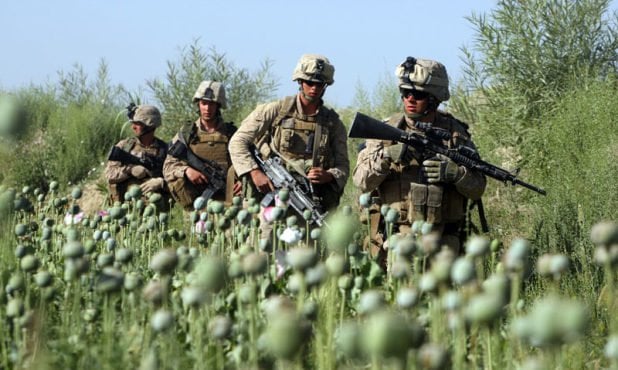 Antes da invasão dos Estados Unidos em 2001, a produção de droga foi quase que completamente erradicada pelo Taliban. Logo após a invasão norte-americana [outubro de 2001], a produção de droga começou a crescer drasticamente e hoje o Afeganistão produz noventa por cento do ópio mundial, e à beira de tornar-se um narco-Estado. Há relatos de que forças estadunidenses admitiram que as drogas têm fluído do Afeganistão em aviões dos Estados Unidos.
Antes da invasão dos Estados Unidos em 2001, a produção de droga foi quase que completamente erradicada pelo Taliban. Logo após a invasão norte-americana [outubro de 2001], a produção de droga começou a crescer drasticamente e hoje o Afeganistão produz noventa por cento do ópio mundial, e à beira de tornar-se um narco-Estado. Há relatos de que forças estadunidenses admitiram que as drogas têm fluído do Afeganistão em aviões dos Estados Unidos.
Ahmad Wali Karzai, o hoje morto governador da província de Kandahar, foi em determinado período o maior traficante de drogas não apenas do Afeganistão, mas também da região. Durante todo o tempo, ele foi pago pela CIA. Tem havido até mesmo reconhecimentos de funcionários estadunidenses diretamente envolvidos com as operações da droga no Afeganistão, sobre o envolvimento da CIA.
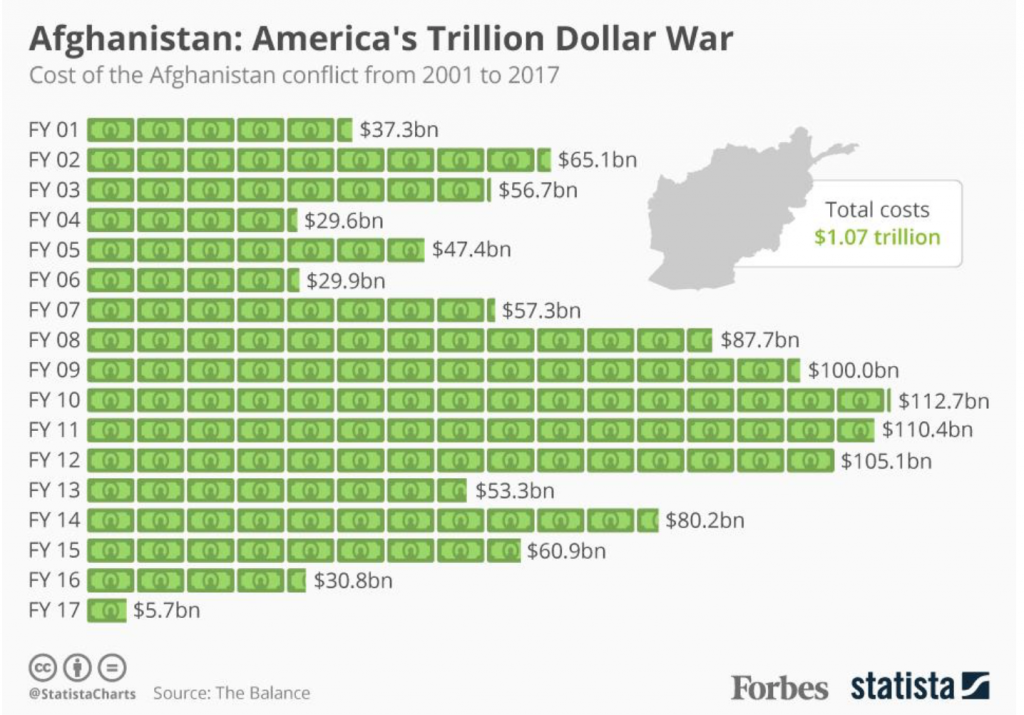
Fonte: Nações Unidas
Edwrad Follis, agente da DEA (Drug Enforcement Administration] afirmou que a CIA “fechou um olho” ao comércio de drogas no Afeganistão. Mais recentemente, John Abbotsford, ex-analista da CIA e veterano de guerra que lutou no Afeganistão, confessou que a CIA desempenhou papel no narcotráfico.
Ainda que excluamos esses reconhecimentos e relatos, é difícil acreditar que uma superpotência que se jacta de sua moderna tecnologia em vigilância e em coleta de dados de inteligência, não seja capaz de encontrar campos de produção de ópio nem traçar rotas de suprimento dentro de um país que ocupa.
O fato de que oito bilhões de dólares tenham sido gastos em esforços na erradicação da droga na última década, mas a produção de ópio tem aumentado meteoricamente, é por si só um indicador de que o negócio das drogas serve a determinados interesses dos Estados Unidos no Afeganistão, ou os norte-americanos poderiam tê-lo encerrado há muito.
Outros atores dos propalados esforços contranarcóticos são os contratistas privados dos Estados Unidos, que ganham milhões de dólares através dos contratos contranarcóticos. Um dos maiores beneficiários é a famosa companhia militar Blackwater, que de acordo com a RT obteve 569 milhões de dólares desses contratos.
Companhias particulares contratadas têm dividido enormes lucros com a guerra no Afeganistão, e essa fracassada guerra ás drogas resulta em enormes lucros para elas.
A produção de droga e do narcotráfico constituem-se a base da nossa economia, com milhões de viciados como seu sinistro resultado.
Artigo em inglês :
US Needs the Taliban to Justify Its Military Presence in Afghanistan, 11 de Janeiro de 2018




